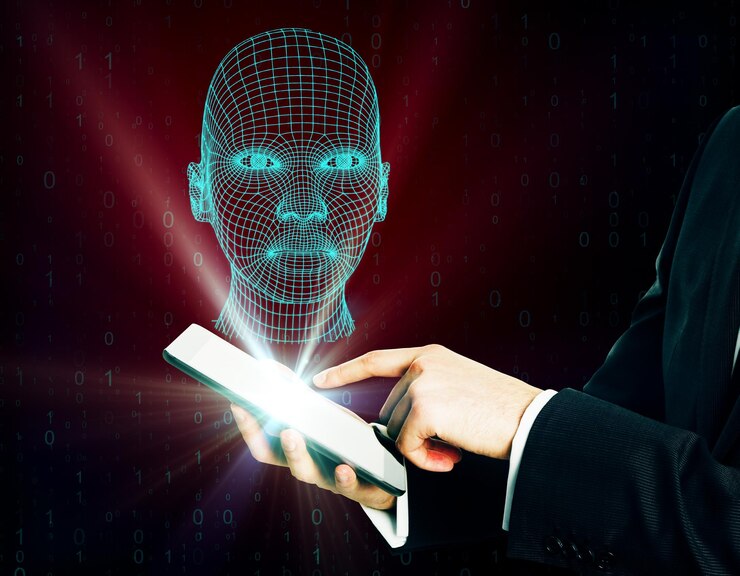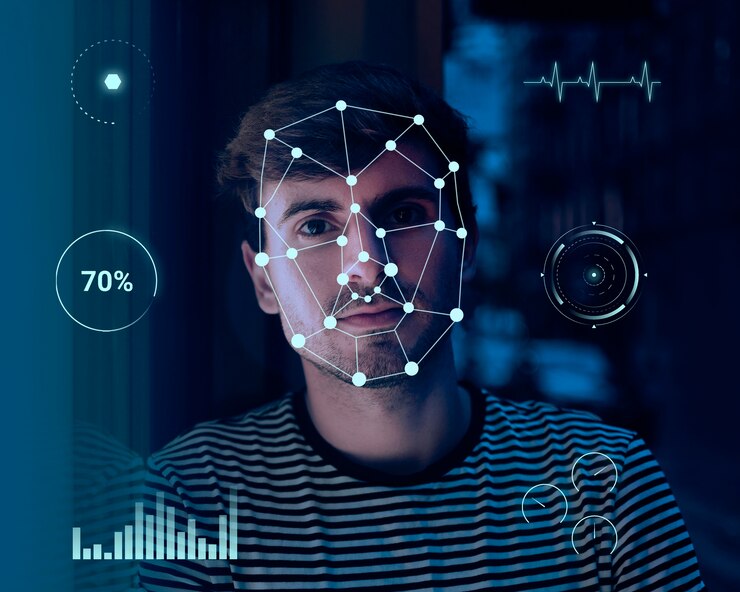Introduction
As technology advances, so do the threats it poses. Deepfakes, a form of synthetic media, have emerged as a major concern in recent years. These hyper-realistic manipulated videos and images can be used to spread misinformation, damage reputations, and even influence elections. Countering Deepfakes: Detecting and Mitigating the Threat of Synthetic Media explores the challenges of identifying and combating deepfakes, as well as their potential societal impact.

The rise of deepfakes has raised questions about the authenticity of media content and the trustworthiness of what we see and hear. It is not just a technical issue; it also has broader social and political consequences. The impact of deepfakes can be far-reaching, undermining public trust and distorting reality.
Understanding the societal impact of deepfakes
Deepfakes have the potential to cause significant harm to individuals, organizations, and society as a whole. By manipulating videos and images, malicious actors can create convincing fake content that spreads rapidly online. This can have serious consequences, such as damaging the reputation of public figures, inciting violence, or spreading false information.
The societal impact of deepfakes extends beyond individual incidents. The widespread dissemination of manipulated media can erode trust in the authenticity of digital content. If people start to doubt the veracity of what they see and hear, it becomes increasingly difficult to distinguish between truth and falsehoods. This erosion of trust can have serious implications for democracy, journalism, and public discourse.
Moreover, deepfakes can exacerbate existing social divisions by amplifying false narratives and reinforcing biases. They can be used to exploit people’s fears, incite hatred, and deepen societal divisions. As deepfake technology becomes more accessible, the potential for misuse and harm increases, making it crucial to develop effective strategies to counter this threat.
Examples of deepfake use and their consequences
Deepfakes have already been used in various instances with significant consequences. One notable example is the manipulation of political campaigns and elections. By creating fake videos or audio recordings of politicians, deepfakes can be used to discredit political opponents, sway public opinion, and manipulate the outcome of elections. This not only undermines the democratic process but also erodes trust in political institutions.
Another alarming use of deepfakes is in the realm of revenge porn. By superimposing someone’s face onto explicit content, perpetrators can cause immense harm to their victims, tarnishing their reputation and causing emotional distress. Deepfakes have also been used to create fake celebrity porn, further blurring the lines between reality and fiction.
Additionally, deepfakes pose a threat to national security. By impersonating high-ranking officials or military personnel, malicious actors can disseminate false information, leading to chaos, confusion, and potentially compromising sensitive operations. The potential consequences of such manipulation are far-reaching and can have severe real-world implications.
The challenges of identifying and combating deepfakes
Detecting deepfakes is a complex and evolving challenge. The rapid advancement of deepfake technology makes it increasingly difficult to distinguish between genuine and manipulated media. Deepfakes are created using sophisticated machine learning algorithms that constantly improve and evolve, making them harder to detect.
One major challenge is the availability of large datasets of real and manipulated media for training detection algorithms. Deepfakes require significant amounts of data to create convincing forgeries, but acquiring a diverse dataset of real and manipulated content for training purposes is challenging. This scarcity of data hampers the development of accurate and robust detection models.
Another challenge is the speed at which deepfakes can be generated and disseminated. Deepfake technology is becoming more accessible, and with the rise of social media platforms, fake content can spread rapidly and reach a wide audience. This makes it difficult to contain the spread of deepfakes and mitigate their impact before they go viral.
Furthermore, deepfakes can be highly convincing, even to the trained eye. They can mimic subtle facial expressions, voice patterns, and other visual and auditory cues that make them difficult to distinguish from genuine content. As technology advances, deepfakes will likely become even more sophisticated, requiring constant vigilance and innovation to detect and combat them effectively.
Techniques for detecting deepfakes
Despite the challenges, researchers and experts are actively developing techniques to detect deepfakes. One approach is through the use of machine learning algorithms. By training models on large datasets of both real and manipulated media, these algorithms can learn to identify patterns and inconsistencies that indicate the presence of deepfakes. This approach holds promise but requires access to diverse and high-quality training data.
Another technique is forensic analysis, which involves examining the digital artifacts left behind by the deepfake generation process. By analyzing inconsistencies in lighting, shadows, or facial geometry, forensic analysts can identify anomalies that suggest the presence of tampering. However, this method requires expertise and may not be scalable for large-scale detection.
Researchers are also exploring the use of biometric features, such as heart rate or eye movement, to detect deepfakes. These physiological signals can be difficult to replicate accurately in deepfakes, providing a potential avenue for detection. However, further research is needed to determine the reliability and effectiveness of these biometric-based approaches.
Legal and ethical considerations surrounding deepfakes
The rise of deepfakes has raised important legal and ethical considerations. From a legal standpoint, deepfakes can infringe on an individual’s right to privacy, damage their reputation, or violate copyright laws. Existing legal frameworks may need to be updated to address the unique challenges posed by deepfakes.
Ethically, the use of deepfakes raises questions about consent, accountability, and the responsible use of technology. The creation and dissemination of deepfakes without the consent of the individuals involved can cause significant harm and violate their rights. It is essential to establish clear guidelines and ethical standards to govern the creation and use of synthetic media.
Mitigating the threat of deepfakes
Mitigating the threat of deepfakes requires a multi-faceted approach involving technology, education, and policy. Technological advancements in deepfake detection and prevention are crucial, but they should be complemented by efforts to raise awareness and educate the public about the existence and potential impact of deepfakes.
Collaboration between technology companies, researchers, and policymakers is also essential to develop and implement effective strategies to combat deepfakes. By sharing knowledge, resources, and best practices, stakeholders can work together to stay one step ahead of malicious actors and minimize the harm caused by deepfakes.
Potential solutions and advancements in deepfake detection
Researchers and technology companies are actively working on developing innovative solutions to detect and combat deepfakes. Advancements in machine learning algorithms, computer vision, and artificial intelligence hold promise for more accurate and efficient deepfake detection.
One potential solution is the development of deepfake detection tools and software that can be integrated into existing platforms and social media networks. These tools can automatically flag and label potentially manipulated content, giving users the ability to make informed decisions about the authenticity of the media they consume and share.
Furthermore, ongoing research into the development of robust and scalable deepfake detection algorithms is crucial. By continuously improving detection models and expanding the available training datasets, researchers can enhance the accuracy and reliability of deepfake detection systems.
The role of technology and AI in countering deepfakes
While technology has played a significant role in the creation and spread of deepfakes, it can also be leveraged to counter this threat. Artificial intelligence (AI) and machine learning algorithms can be used to develop more sophisticated detection models and automate the process of identifying deepfakes.
Additionally, advancements in blockchain technology hold promise for verifying the authenticity of digital content. By creating a decentralized and immutable record of media, blockchain can provide a trusted source of truth, making it more difficult for deepfakes to go undetected.
However, it is important to note that technology alone is not sufficient to counter the threat of deepfakes. A holistic approach that combines technological solutions with education, policy, and public awareness is necessary to effectively mitigate the impact of deepfakes.
Conclusion and the importance of staying vigilant against deepfakes
In conclusion, deepfakes present a significant threat to individuals, organizations, and society as a whole. The ability to manipulate videos and images in a hyper-realistic manner raises concerns about the authenticity of media content and the erosion of public trust. Detecting and countering deepfakes requires a collaborative effort involving technology companies, researchers, policymakers, and the public.
By understanding the societal impact of deepfakes, recognizing the challenges involved in detection, and exploring potential solutions, we can better prepare ourselves to combat this threat. Staying vigilant, raising awareness, and investing in research and development are key to mitigating the harm caused by deepfakes and preserving the integrity of digital media.


